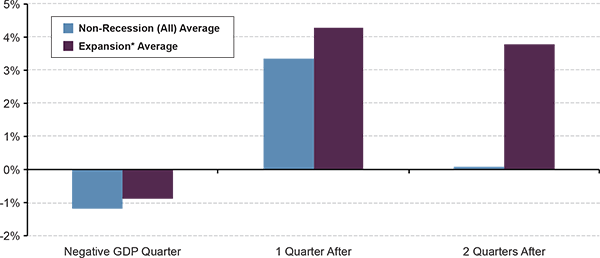Investors should expect a quiet summer with markets rolling along, but with valuations becoming frothy now is a time to consider greater exposure to assets with higher credit quality.
Global CIO Commentary by Scott Minerd, Guggenheim Partners LLC
The U.S. unemployment rate dropped to 6.1 percent in June from 6.3 percent, reminding us yet again of the underlying strength of the U.S. economy. Indeed, for the past four months, nearly every major sector of the U.S. economy has added jobs. The U.S. Federal Reserve is not likely to react hawkishly in the short term to the trending strength of the job market. In fact, they are likely to do all they can to continue their dovish support of jobs growth. Recent data on everything from hiring to housing tells us that the U.S. economy is truly firing on all cylinders, which is exactly what the Fed wants. And with the European Central Bank, Bank of Japan, and the People’s Bank of China all likely to maintain their accommodative monetary policy stances, the global investment environment remains positive.
Of course, while investors are enjoying this rather benign risk environment, it is important to guard against complacency. Back in April 2012, we wrote that CCC-bonds were poised to outperform the broader leveraged credit market. Since that time through the end of June of this year, CCC-rated bonds returned 29.6 percent on a total return basis, outperforming the Credit Suisse High Yield Index by 5.6 percentage points. Now in a general sense, credit spreads across the board may well have room to tighten further, but on a valuation basis, CCC-rated high yield bonds and CCC-rated bank loans are the most overvalued among fixed-income assets. While it may be seen as selling somewhat early, it is time to be cognizant of these overvaluation signals and consider adjusting portfolios toward greater exposure to higher-quality credits such as BB-rated and B-rate bank loans and bonds. I am reminded of the words of Baron Rothschild, who said the secret to his great wealth was that he sold early. Our High Yield and Bank Loan Outlook, published on Tuesday, explored the theme of degrees of overvaluation in leveraged credit in greater detail.
I believe we can expect a quiet summer with markets rolling along. However, considering past events is important when planning for the future, and recently I have been thinking of the summer of 1987. Investors at that time failed to recognize the levels of overvaluation present in the market. Reality only hit home on October 19th of that year, when U.S. stocks fell by more than 22 percent and markets around the world precipitously dropped in what became known as Black Monday. While I do not envision a stock market crash or financial crisis in the fourth quarter, we should learn from the lessons of the past and be wary of the danger of complacency.
Chart of the Week
U.S. Economy Poised for Strong Rebound
Since 1947, when the U.S. economy has not been in a recession, economic activity has only contracted in 11 quarters. This most recent quarter was the worst of these, with GDP shrinking by 2.9 percent. Following negative quarters that occur absent a recession, however, the average rebound in economic growth has been more than 3 percent. When an expansion is clearly underway, the average rebound has been over 4 percent, with economic growth two quarters after the decline averaging 3.8 percent.
AVERAGE ANNUALIZED REAL GDP GROWTH, EXCLUDING RECESSIONS, AFTER GDP CONTRACTION

Source: Haver, Guggenheim Investments. Data as of 7/7/2014. *Note: Expansion refers to any quarter more than two quarters before the beginning of a recession.
Economic Data Releases
U.S. Payrolls Strong as Unemployment Rate Continues Falling
- Non-farm payrolls rose in June by 288,000, beating expectations. The prior two months were revised up by 29,000. Gains were broad-based across industries.
- Average hourly earnings rose in June by 0.2 percent and the workweek was unchanged at 34.5 hours.
- The unemployment rate dropped in June to 6.1 percent from 6.3 percent, although the labor force participation rate was unchanged.
- Initial jobless claims ticked up to 315,000 for the week ended June 28.
- Job openings continued to surge in May, reaching a seven-year high of 4.63 million.
- The NFIB Small Business Optimism Index decreased unexpectedly in June, falling to 95.0 from 96.6 as expectations for the economy and sales declined.
- The ISM non-manufacturing index showed a slightly slower pace of expansion in June, down to 56.0 from 56.3.
- The trade deficit narrowed in May from April’s two-year high, falling to $44.4 billion.
German Data Falters, Chinese Prices Show Stabilization
- Euro zone retail sales were flat in May, after April’s figures were revised into negative territory.
- Industrial production in Germany dropped 1.8 percent in May, the worst month in two years and the third consecutive decrease.
- German exports dropped 1.1 percent in May, following April’s 2.6 percent gain.
- U.K. industrial production fell in May for the first time in four months, falling 0.7 percent.
- The China HSBC Services PMI jumped to 53.1 in June, the highest level since January 2013.
- China’s CPI decreased from 2.5 percent to 2.3 percent in June. Producer prices fell -1.1 percent, the smallest decline in two years.
- Japan’s Economy Watchers survey continued to rise in June, increasing to 47.7 from 45.1 in the current situation index. The outlook index declined modestly.














